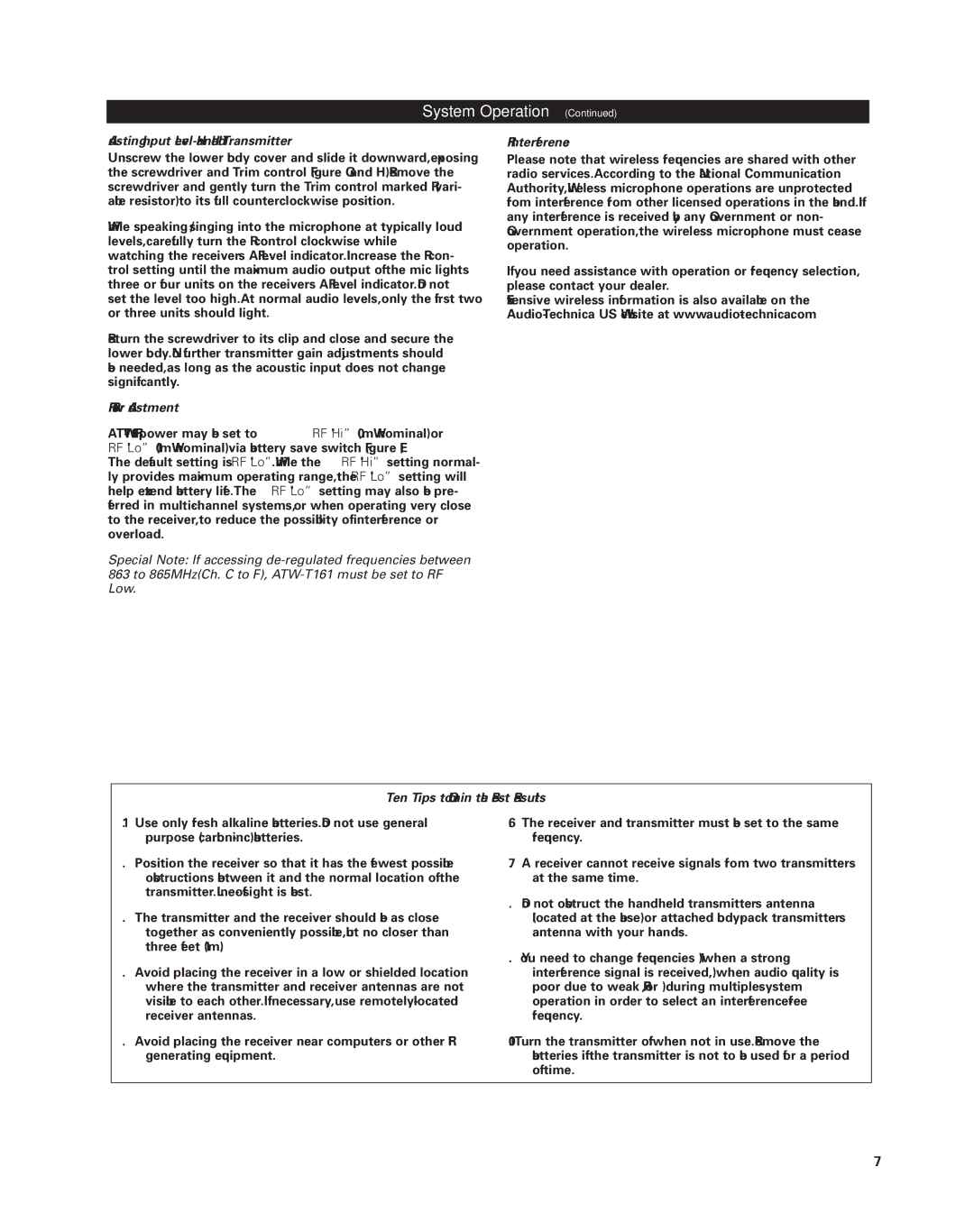System Operation (Continued)
Adjusting Input Level - Handheld Transmitter
Unscrew the lower body cover and slide it downward, exposing the screwdriver and Trim control (Figure G and H). Remove the screwdriver and gently turn the Trim control marked "VR" (vari- able resistor) to its full counterclockwise position.
While speaking/singing into the microphone at typically loud levels, carefully turn the VR control clockwise while watching the receiver’s AF Level indicator. Increase the VR con- trol setting until the maximum audio output of the mic lights three or four units on the receiver's AF Level indicator. Do not set the level too high. At normal audio levels, only the first two or three units should light.
Return the screwdriver to its clip and close and secure the lower body. No further transmitter gain adjustments should be needed, as long as the acoustic input does not change significantly.
RF Power Adjustment
Special Note: If accessing
RF Interference
Please note that wireless frequencies are shared with other radio services. According to the National Communication Authority, “Wireless microphone operations are unprotected from interference from other licensed operations in the band. If any interference is received by any Government or non- Government operation, the wireless microphone must cease operation...”
If you need assistance with operation or frequency selection, please contact your dealer.
Extensive wireless information is also available on the
| Ten Tips to Obtain the Best Results | ||
1. | Use only fresh alkaline batteries. Do not use “general | 6. | The receiver and transmitter must be set to the same |
| purpose” |
| frequency. |
2. | Position the receiver so that it has the fewest possible | 7. | A receiver cannot receive signals from two transmitters |
| obstructions between it and the normal location of the |
| at the same time. |
| transmitter. | 8. | Do not obstruct the handheld transmitter’s antenna |
|
| ||
3. | The transmitter and the receiver should be as close |
| (located at the base) or attached |
| together as conveniently possible, but no closer than |
| antenna with your hands. |
| three feet (1 m). | 9. | You need to change frequencies 1) when a strong |
|
| ||
4. | Avoid placing the receiver in a low or shielded location |
| interference signal is received, 2) when audio quality is |
| where the transmitter and receiver antennas are not |
| poor due to weak RF, or 3) during |
| visible to each other. If necessary, use |
| operation in order to select an |
| receiver antennas. |
| frequency. |
5. | Avoid placing the receiver near computers or other RF | 10. | Turn the transmitter off when not in use. Remove the |
| generating equipment. |
| batteries if the transmitter is not to be used for a period |
|
|
| of time. |
|
|
|
|
7
